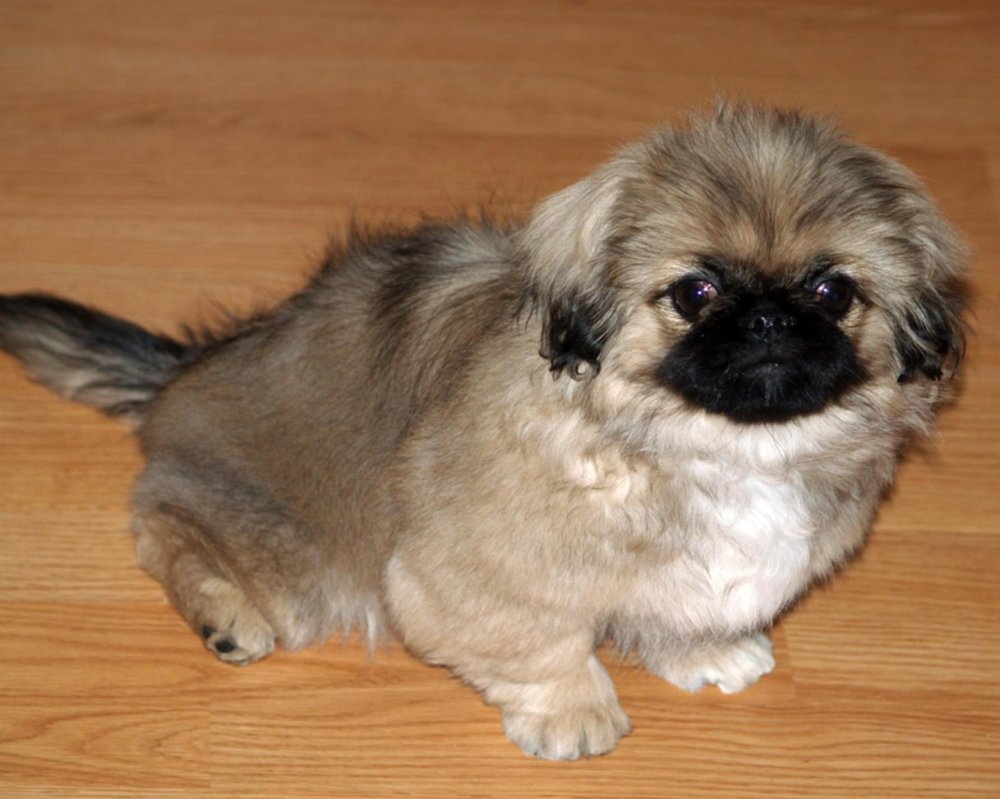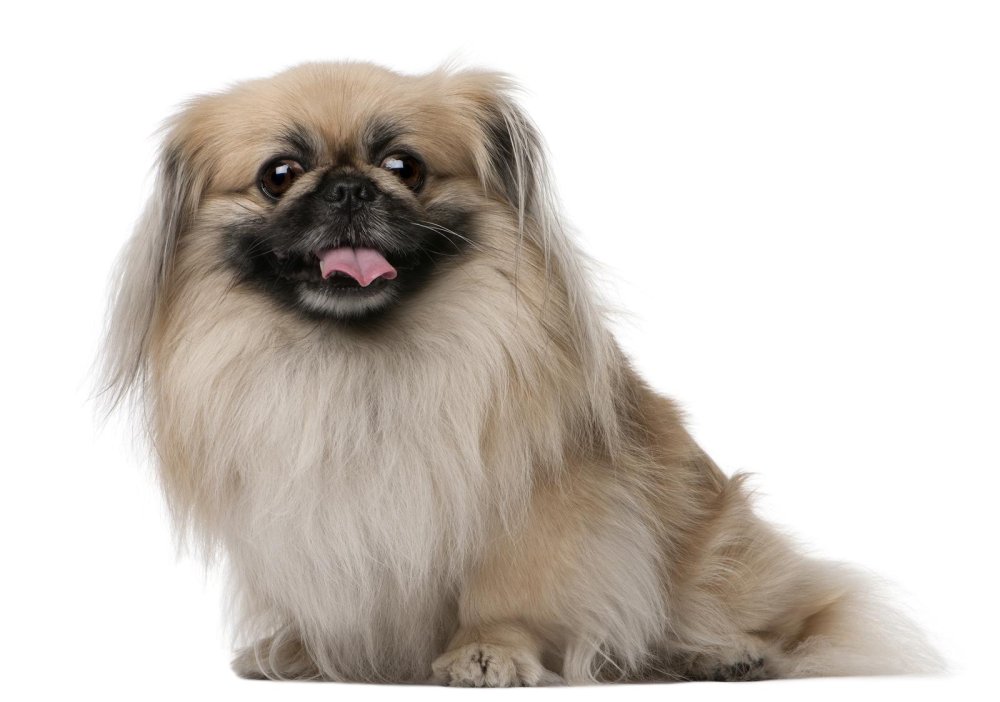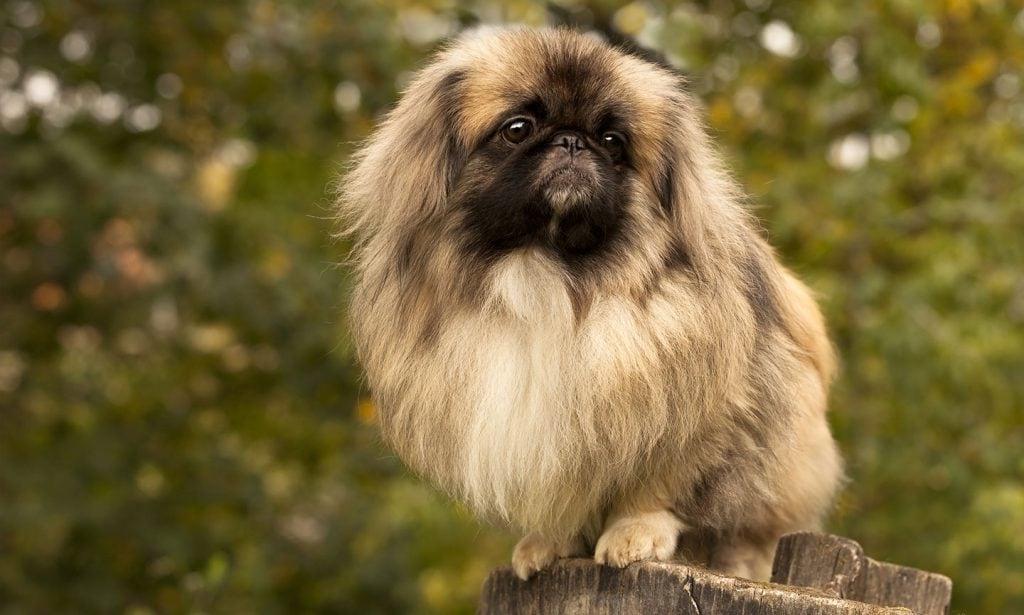- Breed Category: Toy Group
- Country of Origin: China
- Average Height: 15-23 cm (6-9 inches)
- Average Weight: 3.2-6.4 kg (7-14 lbs)
- Average Life Span: 12-15 years
- Grooming Requirements: High; regular brushing needed
- Exercise Requirements: Low; short daily walks
- Coat Type: Long and flowing
- Coat Color Variations: Various, including gold, red, sable
- Shedding Level: Moderate
- Ear Type: Drop ears
- Tail Type: Curled over back
- Temperament: Loyal, independent, affectionate
- Intelligence Level: Moderate
- Barking Tendency: Moderate
- Compatibility with Children: Good with older children
- Compatibility with Other Pets: Generally good
- Training Ease: Can be stubborn
- Common Health Issues: Brachycephalic syndrome, eye problems
- Dietary Needs: High-quality small breed diet
- Energy Level: Low to moderate
- Drooling Tendency: Low
- Sensitivity to Weather: Sensitive to heat
- Overall Maintenance Level: High
- Original Purpose: Companion to Chinese royalty
- Year of Recognition by Kennel Clubs: 1909
- Apartment Friendly: Yes
- Best Suited For: Singles, seniors, families
- Cost of Ownership: Moderate to high
- Unique Traits: Lion-like appearance, regal demeanor
- Cultural Significance: Symbol of Chinese royalty
- Popularity Rank: Moderate
Imagine a lion, but in miniature form, with a mane that flows like silk. That’s the Pekingese for you. This breed, with its regal appearance and dignified air, has a history as rich as its coat. Originating from ancient China, the Pekingese was a cherished companion of Chinese royalty, often seen as a symbol of status and power. The purpose of this article is to delve into the unique characteristics, fascinating history, and essential care tips for this noble breed. Understanding the Pekingese means appreciating its storied past and knowing how to cater to its specific needs, ensuring a happy and healthy life for this little lion dog.
The Pekingese: A Royal Companion

Early Development of the Breed
The Pekingese has roots that stretch back over 2,000 years, making it one of the oldest dog breeds. Bred in ancient China, these dogs were specifically developed to resemble the mythical Chinese guardian lions. Their small size and distinctive appearance were highly prized, and they were often kept as lap dogs by the elite.
Role in Chinese Imperial History
In the imperial courts of China, the Pekingese was more than just a pet; it was a symbol of power and prestige. These dogs were so revered that only members of the royal family and high-ranking officials were allowed to own them. They were often carried in the sleeves of robes, earning them the nickname “sleeve dogs.”
Key Historical Figures and Events
One notable event in the breed’s history occurred during the Second Opium War in 1860. When British forces invaded the Summer Palace in Beijing, they discovered several Pekingese dogs. These dogs were taken back to England, where they quickly became favourites of Queen Victoria and other members of the British aristocracy.
Physical Characteristics
The Pekingese is instantly recognisable with its lion-like mane, flat face, and large, dark eyes. Despite their small stature, they carry themselves with a dignified and confident air. Their coat is long and flowing, requiring regular grooming to maintain its splendour. This breed’s unique appearance is matched by its equally distinctive personality, making it a truly special companion.
Appearance and Unique Physical Traits
The Pekingese is a small dog, typically weighing between 3 to 6 kilograms, but don’t let their size fool you. They have a presence that’s larger than life, thanks to their luxurious, lion-like mane and distinctive flat face. Their coat comes in a variety of colours, including gold, red, sable, and even black, each adding to their majestic allure. Those large, dark eyes are expressive, often conveying a sense of wisdom and curiosity.
One of the most striking features of the Pekingese is their unique gait, often described as a rolling motion. This is due to their slightly bowed legs, which add to their charm. Their compact, sturdy body is well-balanced, giving them a dignified stance that commands attention.
Temperament and Behaviour
Pekingese are known for their independent and sometimes stubborn nature. They are loyal companions, often forming strong bonds with their families. While they can be aloof with strangers, they are affectionate and loving with those they trust. Despite their royal lineage, they have a playful side and enjoy engaging in activities that stimulate their minds.
These dogs are also known for their bravery, often standing their ground despite their small size. They are alert and make excellent watchdogs, always ready to announce the arrival of visitors. However, their independent streak means they require patient training and socialisation from an early age to ensure they grow into well-rounded companions.
Personality and Suitability as a Family Pet

Typical Personality Traits
The Pekingese is a breed that exudes independence and a regal demeanor. They carry themselves with a certain dignity, reminiscent of their royal past. Despite their aloofness with strangers, they are incredibly affectionate with their families, forming deep bonds with those they trust. This combination of independence and affection makes them unique companions.
Suitability as a Family Pet
As a family pet, the Pekingese is well-suited to households that appreciate their independent nature. They thrive in environments where their space is respected, yet they are included in family activities. Their loyalty and affection make them wonderful companions for those who understand their unique personality.
Interaction with Children and Other Animals
Pekingese can be good with children, especially if they are raised together. However, due to their small size and dignified nature, interactions should be supervised to ensure gentle handling. They can coexist with other animals, but early socialisation is key to fostering harmonious relationships.
Training and Exercise Needs
Training a Pekingese requires patience and consistency. Their independent streak means they may not always be eager to please, but with positive reinforcement, they can learn well. Exercise needs are moderate; they enjoy short walks and playtime, which help keep them mentally and physically stimulated.
Training, Exercise, and Health of the Pekingese

Importance of Early Training and Socialisation
Getting a Pekingese off to a good start with early training and socialisation is crucial. These little dogs have a mind of their own, so introducing them to different people, pets, and environments early on helps them grow into well-adjusted adults. It’s all about building their confidence and reducing any potential for stubbornness.
Recommended Training Techniques
When it comes to training, patience is key. Positive reinforcement works wonders with Pekingese. They respond well to treats and praise, so keep sessions short and fun. Consistency is important, but remember, they might not always be eager to please, so a gentle approach is best.
Exercise Requirements and Activities They Enjoy
Pekingese don’t need a ton of exercise, but they do enjoy their daily walks and a bit of playtime. Short strolls around the neighbourhood or a game of fetch in the backyard can keep them happy and healthy. They love activities that engage their minds, so puzzle toys can be a great addition.
Health and Lifespan
With proper care, a Pekingese can live a long and healthy life, often reaching 12 to 15 years. Regular vet check-ups, a balanced diet, and maintaining a healthy weight are essential. Watch out for common issues like breathing difficulties due to their flat faces, and keep an eye on their eyes and skin folds to prevent infections.
Health and Care for Your Pekingese

Common Health Issues
Pekingese are prone to certain health issues, mainly due to their unique physical traits. Breathing difficulties can arise from their flat faces, and they may also experience eye problems and skin infections in their facial folds. Regular vet visits are crucial to catch any issues early.
Average Lifespan and Health Tips
With the right care, Pekingese can live between 12 to 15 years. Keeping them healthy involves a balanced diet, regular exercise, and maintaining a healthy weight. It’s important to monitor their breathing and keep their eyes and skin folds clean to prevent infections.
Preventative Care Recommendations
- Schedule regular vet check-ups to monitor their health.
- Ensure a balanced diet to maintain a healthy weight.
- Keep their eyes and skin folds clean to prevent infections.
- Provide moderate exercise to keep them fit and engaged.
Grooming and Maintenance
The Pekingese’s luxurious coat requires regular grooming to keep it in top condition. Brushing several times a week helps prevent matting and keeps their coat looking splendid. Regular baths and trimming around the eyes and ears are also important to maintain hygiene and comfort.
Coat Care and Grooming for Your Pekingese

Coat Care and Grooming Routines
The Pekingese’s coat is nothing short of magnificent, but it does require some dedication to keep it looking its best. Regular brushing, at least three to four times a week, is essential to prevent tangles and matting. A slicker brush and a metal comb are your best friends here. Pay special attention to the areas behind the ears and under the legs, as these spots are prone to knots.
Shedding and Seasonal Grooming Tips
Pekingese do shed, particularly during seasonal changes. During these times, daily brushing can help manage the extra hair and keep your home a bit tidier. A good bath every month or so will also help keep their coat clean and fresh. Just make sure to dry them thoroughly to avoid any skin issues.
Diet and Nutrition
A balanced diet is crucial for maintaining the health and vitality of your Pekingese. High-quality dog food, rich in protein and essential nutrients, supports their overall well-being. Be mindful of portion sizes to prevent obesity, which can exacerbate breathing issues. Fresh water should always be available, and occasional treats can be given, but moderation is key.
Nutritional Needs and Feeding for Your Pekingese

Nutritional Needs for Optimal Health
Feeding your Pekingese the right diet is key to keeping them healthy and happy. They need a balanced diet rich in protein, healthy fats, and essential vitamins. Look for high-quality dog food that lists meat as the first ingredient. Omega-3 and Omega-6 fatty acids are great for their skin and coat, while antioxidants support their immune system.
Foods to Include and Avoid
Include lean meats, fish, and vegetables in their diet. Avoid foods high in fillers, artificial preservatives, and excessive grains, as these can lead to allergies and digestive issues. Steer clear of chocolate, onions, and grapes, as these are toxic to dogs.
Feeding Schedules and Portion Recommendations
Stick to a regular feeding schedule, typically twice a day. Portion sizes depend on their age, weight, and activity level, so consult your vet for specific recommendations. Overfeeding can lead to obesity, which is a common issue in Pekingese due to their small size.
Fun Facts and Trivia
Did you know that Pekingese were once considered sacred in China? They were believed to ward off evil spirits. Also, their unique rolling gait is due to their slightly bowed legs, adding to their charm and character.
Famous Pekingese in Media and History

Interesting Tidbits about the Breed
The Pekingese has always been a breed shrouded in mystery and allure. In ancient China, they were believed to be the result of a lion falling in love with a marmoset, a tale that adds to their mythical charm. Their role as protectors of the imperial family was so significant that stealing one was punishable by death. This breed’s unique rolling gait, often likened to a lion’s prowl, is a result of their slightly bowed legs, adding to their distinctive character.
Famous Pekingese in Media or History
Throughout history, the Pekingese has captured the hearts of many, including royalty and celebrities. One of the most famous Pekingese was “Looty,” a dog taken from the Summer Palace in Beijing during the Second Opium War and presented to Queen Victoria. In more recent times, a Pekingese named “Wasabi” won the Best in Show at the Westminster Kennel Club Dog Show in 2021, showcasing the breed’s enduring appeal and elegance.
Final Thoughts

The Pekingese is a regal and loyal companion. With its rich history and unique characteristics, this breed offers both challenges and rewards for dedicated owners. Understanding their needs and embracing their independent nature ensures a fulfilling relationship with these noble dogs. As you welcome a Pekingese into your life, remember to cherish their storied past and provide the care they deserve. Embrace the journey with this little lion dog and enjoy the companionship of a truly special breed.
